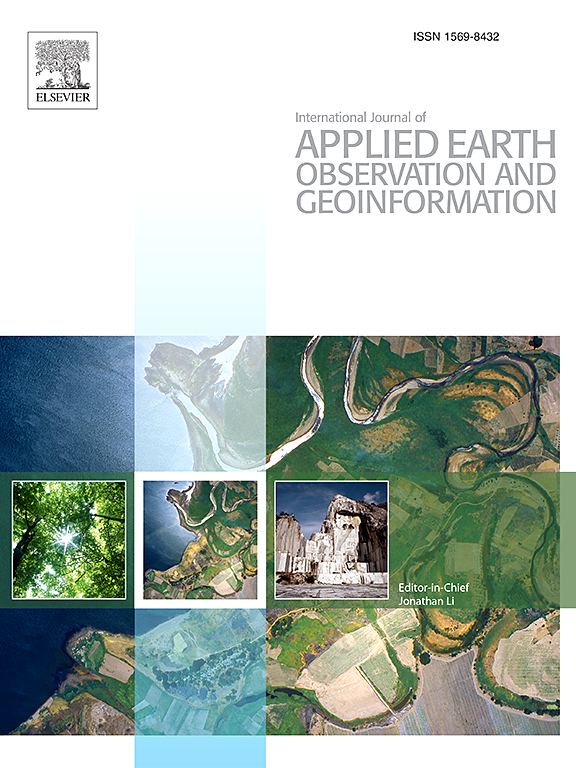更智能的知识图谱:地理空间数字孪生中知识表示的大型语言模型驱动方法
IF 7.6
Q1 REMOTE SENSING
International journal of applied earth observation and geoinformation : ITC journal
Pub Date : 2025-04-13
DOI:10.1016/j.jag.2025.104527
引用次数: 0
摘要
知识图可以描述地理实体的性质和相互关系,是实现地理空间数字孪生的重要知识基础。然而,现有的KGs对地理时空演化下的动态地理实体的准确描述提出了挑战。此外,它们受限于用户的专业背景,这阻碍了更新和交流。为此,本研究构建了“事件-对象-状态”三域关联的面向gdp的KG,提出了一种大语言模型(LLM)驱动的KG动态更新算法,并建立了一种集成LLM的KG智能Q&; a方法。我们开发了一个原型系统,并选择一个地震灾害作为典型的地理事件进行实验分析。结果表明,该方法能够更全面地反映地理实体的空间、时间、状态、演化过程和相互关系,支持用户使用自然语言构建、更新和查询地理实体,更新效率小于1 min,更新质量可与专家手动更新相比较。与传统地理图谱相比,该方法能够表示虚拟地理实体,在智能和自动化方面具有显著优势,有效打破了专业壁垒,支持知识快速更新需求的地理图谱构建。本文章由计算机程序翻译,如有差异,请以英文原文为准。
More intelligent knowledge graph: A large language model-driven method for knowledge representation in geospatial digital twins
Knowledge graphs (KGs) can describe the nature and relationships of geographic entities and are an essential knowledge base for realizing geospatial digital twins (GDTs). However, existing KGs make it challenging to describe dynamic geographic entities under geographic spatiotemporal evolution accurately. Furthermore, they are constrained by the professional backgrounds of their users, which hinders updates and communication. Therefore, the research constructed an “event-object-state” three-domain associated GDT-oriented KG, proposed a large language model (LLM) −driven KG dynamic update algorithm, and established a KG intelligent Q&A method integrating LLM. We developed a prototype system and selected an earthquake disaster as a typical geographic event for experimental analysis. The results showed that the proposed method can reflect the space, time, state, evolution process, and interrelationships of geographic entities in a more comprehensive way, support users to build, update, and query KGs using natural language, with an updating efficiency of less than 1 min, and an updating quality comparable to that of manual updating by experts. Compared with the traditional KGs, our method can represent virtual geographic entities and has significant advantages in intelligence and automation, which effectively breaks down professional barriers and supports the construction of GDTs with the need for rapid updating of knowledge.
求助全文
通过发布文献求助,成功后即可免费获取论文全文。
去求助
来源期刊

International journal of applied earth observation and geoinformation : ITC journal
Global and Planetary Change, Management, Monitoring, Policy and Law, Earth-Surface Processes, Computers in Earth Sciences
CiteScore
12.00
自引率
0.00%
发文量
0
审稿时长
77 days
期刊介绍:
The International Journal of Applied Earth Observation and Geoinformation publishes original papers that utilize earth observation data for natural resource and environmental inventory and management. These data primarily originate from remote sensing platforms, including satellites and aircraft, supplemented by surface and subsurface measurements. Addressing natural resources such as forests, agricultural land, soils, and water, as well as environmental concerns like biodiversity, land degradation, and hazards, the journal explores conceptual and data-driven approaches. It covers geoinformation themes like capturing, databasing, visualization, interpretation, data quality, and spatial uncertainty.
 求助内容:
求助内容: 应助结果提醒方式:
应助结果提醒方式:


